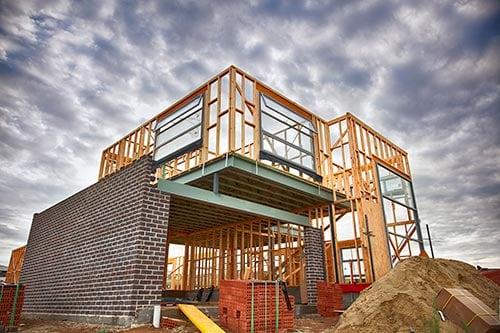 Let’s be honest, no investor buys a property with the plan of stopping at ONE. We all start off with that dream of creating financial wealth through property — but it’s just a solitary few that actually make it.
Let’s be honest, no investor buys a property with the plan of stopping at ONE. We all start off with that dream of creating financial wealth through property — but it’s just a solitary few that actually make it.
Property investing is not “one-size-fits-all” as there are so many variables in play that it just can’t be.
Your purchasing capacity, interest rates, your long-term goals, your short-term goals, your appetite for risk, and your perceived knowledge of the market. When you understand all that these factors entail, then you can work on a plan to achieve your desired outcome. Yes, don’t forget to plan because failing to plan is planning to fail!
When we look at the types of investment vehicles in property — set and forget, cash flow, flips, wraps, growth — they all have a reward, but they may not all achieve what you want in the time frame you want it. For the investors who want to accelerate their wealth in property, property development is considered a sure-fire way of achieving that as long as all of the potential risks are mitigated.
So, let’s talk about creating wealth through property development.
Unlike owner-occupiers who tend to buy properties with their heart and emotionally fuelled decisions, and investors who generally buy with their calculators and factored return, property developers tend to buy more shrewdly, add value and sell on to make a profit.
Property development has its own set of risks but if you understand those risks and have a contingency to manage them, then it should be a successful development. I have personally renovated and sold three properties, subdivided two properties and am about to start on development applications for a multi-unit development. I have bought countless numbers of development sites for my clients over the years, who have then prospered down the development path.
So, what development suits you? If you have never done a development before I would always recommend that you start with a renovate strategy: buy, renovate, refinance to hold or sell, and then repeat. The biggest piece of advice I can give to the first-time renovator is “start with the end in mind first”. Visualize the end product, design it in your mind and then plan backwards to the beginning. As long as you have bought in the right area and you have not overpaid then this strategy should pay dividends for you.
When you are ready to graduate to the wealth acceleration phase then you need to think about what type of development suits:
- A residential subdivision, i.e.: one lot into two (splitter block);
- A double lot residential development (double block): two lots already allocated to the block; or
- A multi-unit development that still carries a residential banner in regards to construction and lending. In Brisbane, this is referred to as an LMR site (low-to-medium residential).
I would recommend first-time developers start with a residential subdivision (reconfiguration of a lot). There are particular types of blocks that suit this type of development.
Residential subdivision
The following is based on the Brisbane City Council regulations for small lots:
- It is always wise to check the zoning of the land. Non-character residential (post 1946) is preferred;
- Minimum 800m2 in land size (not including battle-axe blocks);
- You may also find that the property has already been allocated two lots, but only a single residence is in place. This is the ideal as it does not require a development approval (DA) and you will just have to remove the house;
- Minimum recommended frontage of 20 metres;
- No extreme contour on land, preferred under two metres across front-to-back as stormwater discharge can be an issue if it is greater than this;
- Sewer mains at the front or across the rear of the lot is ideal, but if it is running across the block it is not necessarily a deal breaker;
- Check for potential flooding issues or overland flow overlays as this may impede the development design and build costs;
- Check for any vegetation protection overlays or animal or wildlife corridors; and
- Check for presence of your desired end product around the area right now. This will give you the comfort factor and assist with the end-value estimations. If nothing is around don’t be overly concerned, just keep an eye on the market and time the completion of the development right, allowing at least 12 months from concept to completion.
Likely costs for this development will be approximately $90,000 to $100,000 if DA is required and $70,000 to $90,000 if DA is not required, and then your build and project your management costs.
To be honest, in area with simple no frills, residential splitter block or double lot development currently is a little more profitable if you use a spec builder over a custom build as they can fabricate most of it offsite which will reduce your overall costs.
Be aware that the low volume of suitable development sites (properties) available for sale in the Brisbane market has forced the values up due to increased competition, so your feasibility may not work right now, but still buy it, and land bank. Wait for two or three years for the local market to mature and then rework your feasibility.
LMR
For the more experienced developer, an LMR can offer a substantial reward.
An extra level of due diligence is required when shopping for LMR sites and, believe me, I have spoken to a number of people who have bought what they were told was a “developable LMR site” by the sales agent who was really not familiar with that kind of product. In reality, it is only a house on a block of land that carries the LMR zoning, but is not appropriate for one of a number of possible reasons.
The fundamental features of an LMR site that we look for are:
- Check for zoning LMR 1, LMR 2 or LMR 3 — each has its own height levels but again, think of the end product and goals in mind first;
- Check the zoning of the land — non-character residential (post 1946) is preferred although not a deal breaker as, if appropriate, the house can be repositioned on the block;
- Check that the land has a site area no less than 600m with frontage no less than 15m;
- Corner LMR sites are in some cases a superior site as they can offer greater flexibility in design;
- Check for any vegetation protection overlays or animal or wildlife corridors;
- No extreme contour on land but discharge is not as much of a constraint with LMR as residential subdivisions’
- Sewer mains positioned at the front or across the rear of the lot are ideal but running across the block is also not a deal breaker. An LMR site may have more flexibility in regards to these guidelines;
- Check for potential flooding issues or overland flow overlays as this may impede the development design and build costs but is a little more development-friendly in LMR; and
- Check the surrounding streetscapes to determine the quality of product design and appeal.
If all of the above is considered, then the development will be a fairly low-risk project and easily managed.
You should expect to pay anything from $1,100 per square metre for an LMR site in an entry level emerging suburb up to $2,000 per square metre in the more affluent suburbs, but of course, build costs and end values will vary considerably from suburb to suburb.
As you can see, it is crucial to set out a plan upfront and surround yourself by experts in order to know what type of development suits your risk profile and finances. You then need to execute your plan by buying the right block in the right location to achieve your desired development goals and provide you with the financial rewards.
In Queensland, it is more than just ringing the local council to find out if your block is big enough. You have to understand, respect and use to your advantage the rules and regulations of zoning, planning, design and overall real estate market sentiment to become a successful property developer.
Hey, if it still sounds too hard you can always talk to me. I am willing to answer any of your questions and provide you with guidance on how to get started. In addition, National Property Buyers Brisbane is also able to take care of the entire process if you prefer, from acquiring the appropriate property to council application and design and project managing the entire build.
 Stephen is the director of National Property Buyers Brisbane and has over 20 years of experience in residential property. During his many years as a property buyer’s agent, Stephen has assisted clients to grow their property portfolio with premium investment-grade properties and profitable developments. If you’d like to ask Stephen a question in relation to your situation, he can be contacted on 0488 501 170 or you can visit his company website here. Read more about some of Steve’s recent purchases for his client’s here.
Stephen is the director of National Property Buyers Brisbane and has over 20 years of experience in residential property. During his many years as a property buyer’s agent, Stephen has assisted clients to grow their property portfolio with premium investment-grade properties and profitable developments. If you’d like to ask Stephen a question in relation to your situation, he can be contacted on 0488 501 170 or you can visit his company website here. Read more about some of Steve’s recent purchases for his client’s here.
This article was originally published on Smart Property Investment.
